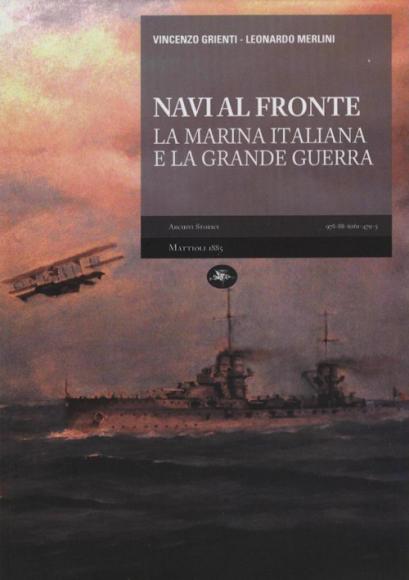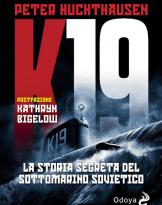Vincenzo Grienti, Leonardo Merlini
Ed. Mattioli 1885, Fidenza (PR), 2015
pagg.149, Euro 15,00
There are many episodes reported in this essay which are the result of the joint work of the journalist Vincenzo Grienti and Marina Leonardo Merlini's officer, some known, others less known, but all fundamental to know the fate and value of the men of the Regia Marina in the 41 months of conflict started on 24 in May 1915, the day Italy entered the war against the Austro-Hungarian empire. A war that saw as the undisputed protagonist Admiral Paolo Thaon di Revel, 1 April 1913 appointed chief of staff of the Regia Marina. Strict observer of the discipline and endowed with an innate modesty, he always gave proof of a marked seafaring ability, audacity and contempt of danger.
"He was unanimously recognized, albeit a posteriori (given that during the service he had to make courageous, counter-trend choices, which at the time reserved for him not a few criticisms) as the undisputed author of the victory over the sea."
His strategic masterpiece "was to intuit that the war on the sea in general, and in the Adriatic in particular, would have been carried out effectively only by light and thin shipping and by the new means and weapon systems that in recent years were rapidly developing and imposing. For this reason, the study, development and training of submarines and naval aviation were strengthened and maintained, and a Submarine Department and an Aeronautical Department were set up at the General Staff."
1 left office in October 1915, after sixteen months as commander of the Piazza di Venezia where he ensured the defense of the city's artistic heritage during the continuous bombing, he returned to assume the position of chief of staff in February 1917. His was the idea of defending the Italian coast, devoid of those natural anchorages and shelters that instead characterized the coasts of the Austro-Hungarian Empire, with the armed trains deployed on the coastal railway between Brindisi and Ravenna (a section was assigned to each train of coastline to be defended of approximately 60 km) having the task of rushing to the threatened place and countering the opposing ships and each constituted by two convoys: one armed (combatant section) and one logistic for the life of the personnel.
"Ultimately an armed train could be considered the same as a warship, self-sufficient and with a crew."
There were three types of trains: with anti-ship function; with dual anti-ship and anti-aircraft function; with anti-aircraft function. Instead to face the attack of the submarines the Marines of the Triple Entente decided to block the Channel of Otranto in order to prevent the boats from reaching the Dalmatian bases and Istria, and through a mobile system constituted by an adequate number of antisubmarine units , which through a fixed system consisting of an immersed explosive obstruction. And if Germany appeared at the beginning of the conflict with 30 boats to immediately give a merciless hunt to enemy ships, thus beginning the saga of the Submarine, Italy, thanks to the impulse provided by Admiral Thaon di Revel, arrived at the outbreak of the War with 13 boats online. Among these was the submarine Giacinto Pullino that, having run into the night between the 30 and the 31 July off the cliff of the Galiola, he had as a pilot Nazario Sauro, later captured and executed for high treason by the Austrians the 10 August 1916.
Admiral Thaon of Revel, in his farsightedness, also carried on the construction of the MAS, anti-submarine motorboats (during the war 320 came into service well), with the aim of damaging the enemy ships on their own bases. The action of Premuda, conducted by the corvette captain Luigi Rizzo the night between 9 and 10 June 1918 and that led to the sinking of the battleship St. Stephen, was a splendid example of the effectiveness of this strategic choice.
Also the admiral is responsible for the development of the Navy Aviation, which proved to be "an essential element in terms of support and support for national and allied naval units, but above all for attack in the sky, on land and on the sea."The fleet consisted of seaplanes, airships and airplanes. The aeroscali were those of Ferrara, Jesi and Pontedera, while the bases of Venice, Porto Corsini and La Spezia were used for the seaplanes.
"To give a shelter to the airships that had the task of sighting the submarines that tried to pass through the Strait of Messina, a hangar was also built in Augusta, which however was completed in the 1920, when the conflict was over."
History of means, that of the Navy Aviation, with well 25 airships, 550 seaplanes and 86 fighter planes at the end of the war and over 17000 completed missions, but above all of men. It was they who made the difference: "officers and sailors who for the first time had to deal not only with the Austro-Hungarian enemy, but also with flying machines, often unreliable."Despite this, many heroic deeds were carried out.
Admiral Thaon of Revel was also the protagonist "of the establishment and operation of an asylum vessel on the Radiata Caracciolo unit, granted by the State so that it could welcome students and instruct seafarers in the maritime compartment of Naples and abandoned childhood in the maritime profession orphans."The phenomenon of asylum ships did not only concern Naples, but also Genoa, Venice, Bari and allowed the creation of many sailors, taking them off the road, from hunger and crime.
"A work, that of human solidarity, which the Italian Navy in different times and in different ways has always conducted with determination and self-sacrifice, obtaining results recognized internationally and in every forum."
Gianlorenzo Capano












